Fault lines In The Kashmir Files: A Weak Narrative
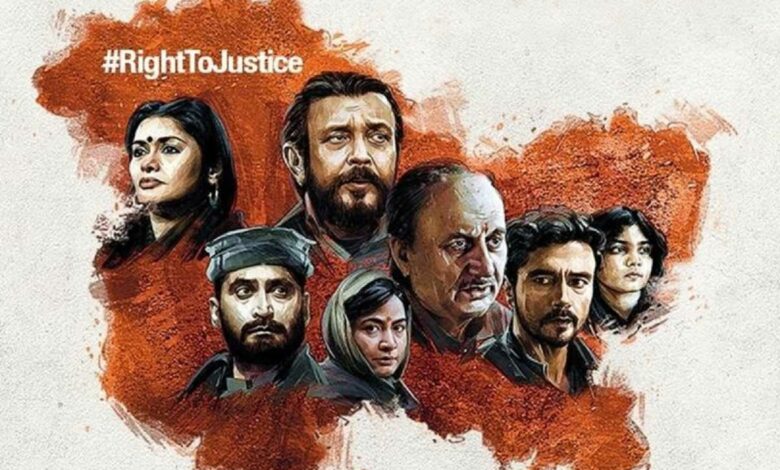
Fault lines In The Kashmir Files: A Weak Narrative
Using Kashmir as its altar, India attempts to reinvent its national identity, this time with a particular majoritarian flavour.
Almost no one in Kashmir has seen the film, which sparked heated debate in op-eds, social media, and living rooms. They wouldn’t have been able to. Like many other aspects of life, cinemas were shut down during the height of militancy and remain closed now. “You’ve come from India.” I’m sure you’ve seen it. “How are you doing?” they inquire.
Few people in Kashmir are aware that the Indian Army screened The Kashmir Files three times a day for a week at its Chinar Auditorium in Srinagar’s cantonment to propagate the “nationalistic message.” The theatre, which overlooked the snow-capped Himalayas, was flanked by gleaming army stores, one of which sold high-quality whiskey.
During a matinée performance attended by army soldiers and their families, I noticed individuals checking their phones to see whose JNU professor the character of Pallavi Joshi was based on. In the dim light of the cinema, two guys googled Arundhati Roy and separatist leader Yasin Malik, who were shown together in a photograph in a movie scene.
The last thirty-two years of the Jhelum may be read in the local Kashmiri’s eclipse—both Muslims and Pandits—from the Valley’s most fierce discussion in recent years. The seas of competing for grief are painfully intertwined and bound by an umbilical cord. The story of one wave cannot be told without the story of the other. The night of January 19, 1990, when mosques called for the extermination of Kashmiri Pandits, may have been completed without the Gaw Kadal massacre a day later, in which security forces slew some 50 Muslims. If this is a narrative about those who were forced to flee their native lands, it is also a story about those left behind.
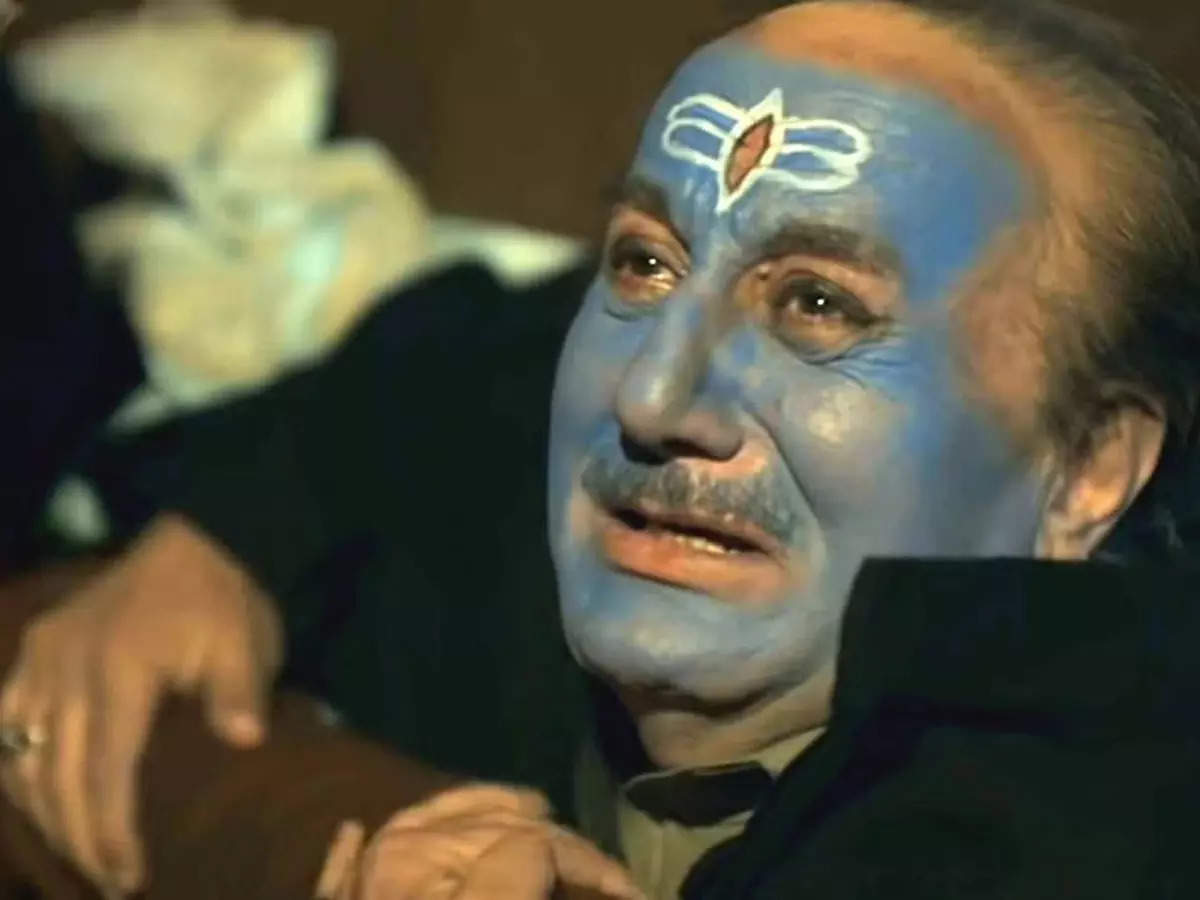
A lake where you can’t take more than fifty steps without coming across a heavy gunman, a café where people speak in hushed tones before losing track of their own words, young men harassed in India’s major cities, a woman who reminds you of your “privileged Indian citizenship,” an elderly Pandit is facing militancy and a girl who recently discovered she shared her story with the Pandits.
And there’s an elderly poet who’s plagued by an unfinished dream. Bishambhar Nath Mattoo, his close friend and the husband of his munhboli sister Rajdulari Handoo, would regularly share a vision with him. “I’d want to see myself in Delhi at least once in my dreams, but I invariably end up in Anantnag’s Devibal temple.” Mattoo died a few years ago in Delhi after being forced to leave the Valley in January 1990. However, Bashir Ahmad Dada, whose angulated face and piercing eyes remind one of Clint Eastwood, still bears the burden. “Not all of them were radicals; many of them were also our soldiers.”
Bashir, the poet, did not have a happy life, and he soon witnessed members of his village being slain in the act of indiscriminate brutality. His son Visalat, born years after that winter, couldn’t simply get a leased apartment in India’s most friendly city Mumbai because he was a Kashmiri Muslim, and he received significant death threats from the government-backed militia Ikhwan.
There is no single story that can speak for everyone. On the other hand, any genuine narrative is expected to be sensitive to the claims of the other. The Kashmir Files Fails As A Film At This Point.
No single narrative can speak for everyone. On the other hand, any real story is required to be attentive to the claims of the other. This is where The Kashmir Files, both as a film and as a political statement, falls short. And here is where the different perspective on Kashmir fails, refusing to name Islamic militancy for fear of disrupting communal unity. On the other hand, truth must be accepted if there is to be reconciliation.
People like Bashir are too few and far between in an impossible militarised zone where many Muslims have legitimate grievances against the Indian state. Eight out of ten Muslims I encountered in Kashmir this week attempted to rationalise, if not explain, the Pandit exodus. One may argue that their loss has rendered them indifferent, if not outright hostile, to the Pandits who formerly shared the valley with them. Or, since a segment of Pandits were connected with “Hindu” India, the “Muslim Kashmir” was bound to turn against them. But then kashmiriyat’s magnificent structure is called into question.
It may have been contested on the day that a vast number of Kashmiri Muslims commemorated then-Pakistan Prime Minister Benazir Bhutto’s famous “Azadi” speech. She said, “The heroic heroic heroic people of Kashmir do not fear death because they are Muslims.” Mujahid and Ghazi blood run in the veins of Kashmiris.”
Many Kashmiris still believe this—the first Azadi occurred in the early 1950s when the land was handed to the tiller, the second happened during the Pandit migration, and the third is still waiting. A religious split persisted in the valley despite the friendship and picture shoots, as it did elsewhere in India.
It victimised the minority community—Muslims in Gujarat, and Pandits in Kashmir. “Bashir dada, why didn’t you take me into confidence before you began your insurgency?” Mattoo asks Bashir as he sits in his sumptuous house in Srinagar. “How come you allowed me to leave Anantnag?”
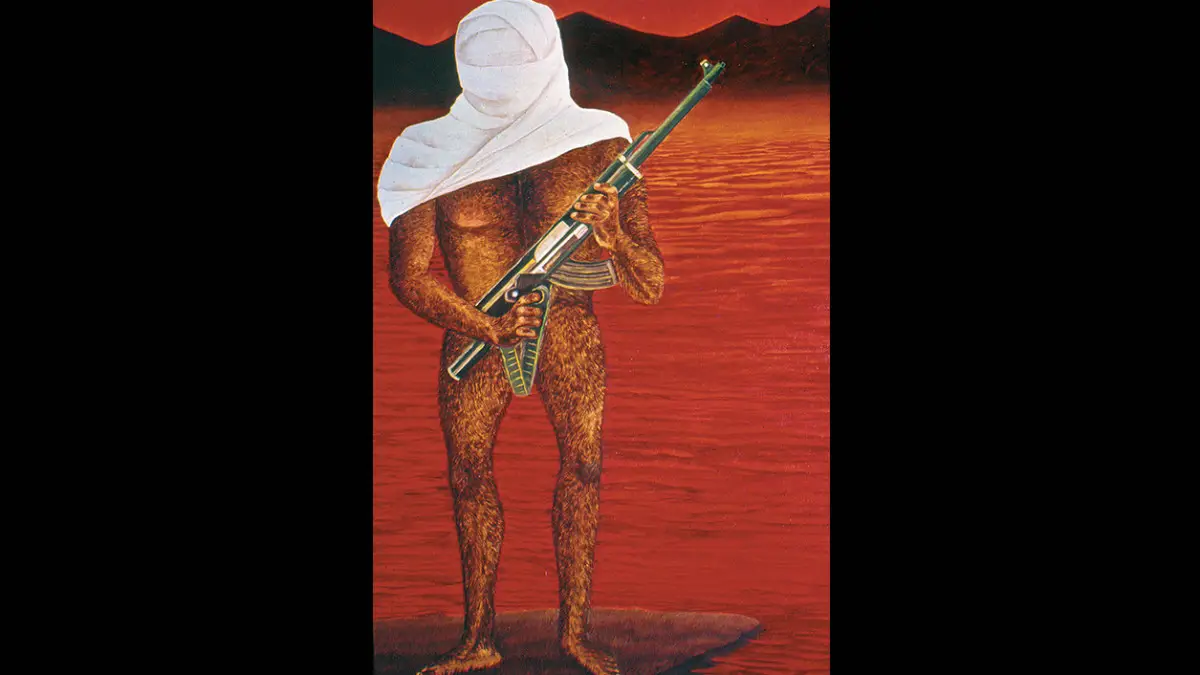
In the Valley, no one is unchallenged, with the storyteller receiving the first inquiry. In a Srinagar café on Monday, a Kashmiri Muslim scholar in her early 30s tells me, “You must make your stance clear that you are writing as a citizen of the Indian State.” She cites Edward Said and Gayatri Chakravorti Spivak rapidly. Jeans, a t-shirt, and loosely flowing short hair over her face. “I don’t have the appearance of a Kashmiri.” She chuckles, “Bad genes.” She is working on a PhD in Kashmir at a university in another country. “It is impolite to inquire about the Pandits’ tragedy from someone born after the migration,” she states emphatically.
Article 370’s repeal is essentially an attempt to refashion collective memory. Without any recommendation or consultation, a state was downgraded to a UT.
The majority of young Kashmiri Muslims are politically aware and knowledgeable about the region’s history. They can recollect “India’s colonial occupation” of Kashmir and vividly describe phoney Muslim confrontations with security forces. Still, they have no memory of the population living among the chinars for decades. Is it because they don’t want to confront a past that questions their interpretation of militancy and their self-identity as tolerant, secular Kashmiris?
In a battle zone, the fabrication of memories is likely unavoidable, a fundamental human prerequisite for coping with grief. Even the departed is given a new name. Shaheed Marguzar (martyr’s graveyard) was a graveyard inside Naqshband Sahib Shrine in Khawaja Bazaar for numerous decades, where the Dogra king’s army slew 22 individuals during a protest in 1931 were buried. In popular remembrance, after the victims died in the security forces fire in 1990, a new graveyard was built, now known as Shaheed Marguzar.
Article 370’s repeal is essentially an attempt to reshape communal memory. Without any proposal from its legislature or engagement with inhabitants, a state was reduced to a Union Territory to undertake a political project of “nationalism.” The national song and the tricolour are now required in all educational institutions.
“Mosques are only allowed to convey religious messages and are not allowed to give any inflammatory messages,” a senior army official said. “Indian iconography was scarce in Kashmir. Indian idols are hardly taught in schools. Rail, not Bharatiya Rail, was the name of the company. A youngster grew up with no recollection of India. “We have to alter it,” the officer continues, going into detail about the establishment’s efforts to “create a national identity in Kashmir.”
In Kashmir, there has been a rise of “pro-India” voices—individuals, journalists, activists, and NGOs—in the previous 30 months. The institution provides these young Kashmiri men and women with jobs, housing, and office space. A campaign by “pro-India” journalists, who feel the Srinagar Press Club has become a nexus for “pro-Pakistan” journalists, is behind the club’s recent closure. Rising Kashmir and Greater Kashmir, which were once symbols of resistance, are now replete with images and news of the prime minister and lieutenant governor.
“When you wake up, you’re confronted with propaganda. It’s an everyday disgrace,” says a hefty Kashmiri guy, his wife standing next to him in a salwar kameez and gold jewellery. She works at a government college as a teacher. “I felt like I was being raped when they had me sing the national song.” “She is not at all political,” the husband emphasises, “but she couldn’t stand the state’s ruthless power.” During my most recent visit in November-December 2019, the feeling of embarrassment was more prominent. The valley appeared to be on the verge of erupting.
The emotion seemed to have faded away lately. According to army officials, violence has decreased, infiltration has dramatically reduced, and tourism has returned, with over 72 lakh visitors since September. For the first time, the number of militants is below 200. Last year, 73 of the 128 teenagers who joined militancy were slain, and 16 were jailed.
The decrease in violence can be attributed to several factors, including improved security coordination among security forces, the transformation of the J&K police into a top-notch anti-militancy unit, a crackdown on separatists and dissenters, increased military capacity, and a tight security grid. Many individuals remark, “Above all, Pakistan is silent these days.”
Following India’s successful placement of Pakistan on the FATF list of nations suspected of terror funding, Pakistan has been unable to transfer guns to Kashmiri terrorists. Kashmiris, on the other hand, are opposed to it. “You can’t see the explosion because it’s happening on the inside.” One dark evening, with Srinagar’s Zero Bridge shining in the distance, a Kashmiri man stated, “I am sitting with you by the lake, smiling, but I am unhappy inside.”
The lights of the army cantonment on the mountain could be seen from afar. “Where is there any peace?” It is the world’s most militarised zone. “The presence of these troops is an act of violence in and of itself,” the lady academic grumbles. The pain and resentment of an “outsider Indian’s” psyche are challenging to identify.
A “pro-India” teen gives a startling observation one morning. “We’ve changed the way we resist.” We can’t afford to lose more lives in asymmetrical situations that blatantly favour security forces.”
The protests in the valley follow a pattern. In 2008, it essentially took the form of rallies and sloganeering. The following year saw stone-pelting with slogans, and in 2010 it was primarily stone-pelting. Burhan Wani was an unintended consequence of the 2010 demonstrations.
Hundreds of Burhans were born after Burhan was killed in 2016, but these young lads would be unable to stand up against Indian soldiers without adequate training and weaponry. “What Adil Ahmad Dar accomplished in Pulwama is the model that may work today,” the young guy adds, alluding to the suicide bomber who killed 40 CRPF officers in February 2019. “We must utilise our lives carefully,” he says, “But it will absolutely destroy Kashmir.”
The Valley exposes all secrets. Conversations may be heard regarding the insurgents’ excellent operational strategies.
I rode a bus from Khanabal, close to the DIG office, one evening in December 2019, when it was already dark. On the adjacent seat, a lovely Class VIII youngster grasped the intricacies of Articles 370 and 371, the subtler distinctions between the LeT, JeM, and Hizbul Mujahideen, and could name the militants operating in his neighbourhood. The military crackdown has silenced these debates and heightened public displays of “nationalism.”
On Pakistan Day, March 23, a television discussion was conducted at Lal Chowk, with the Tricolor adorning the street and the stage. Kashmiri speakers praised India and denounced the pro-Pakistan campaign in the region.
Lal Chowk, the insurgency’s former headquarters, has taken a turn. The presentation, which the government supported, was organised by ANN News, the sole station operating in the valley after the government shut all others a few years ago. Dev Anand, a retired Gujjar colonel, was gathered at Lal Chowk. He travels the valley to boost nationalist consciousness among the Gujjars, and he is a Rajasthan native. As part of nation-building, the governing elite places a specific emphasis on Gujjars.
They had no idea that the Valley’s calendar had red dots. The most treacherous deaths a decade later—Chittisinghpora, Pathribal, and Barakpora—happened in March 1990, the month when the great Pandit exodus started. Some army officials allegedly kidnapped Gujjar Muslims from Brari Aangan hamlet in Anantnag and murdered them at Pathribal, alleging they were “foreign terrorists,” exactly 22 years before the Lal Chowk event this March. Every year on the anniversary of the murders, their family holds a memorial service. Abdul Rashid and Shakur Ahmad of Anantnag met on March 26 to express their grief. As they told how the troops had slaughtered their dads, their voices were pouring with rage.
However, while the crackdown after August 2019 has embarrassed many people, it has also allowed them to express feelings they previously couldn’t. People could scarcely grieve those who died due to terrorists’ bullets not long ago, and therefore large funerals were primarily reserved for militants.
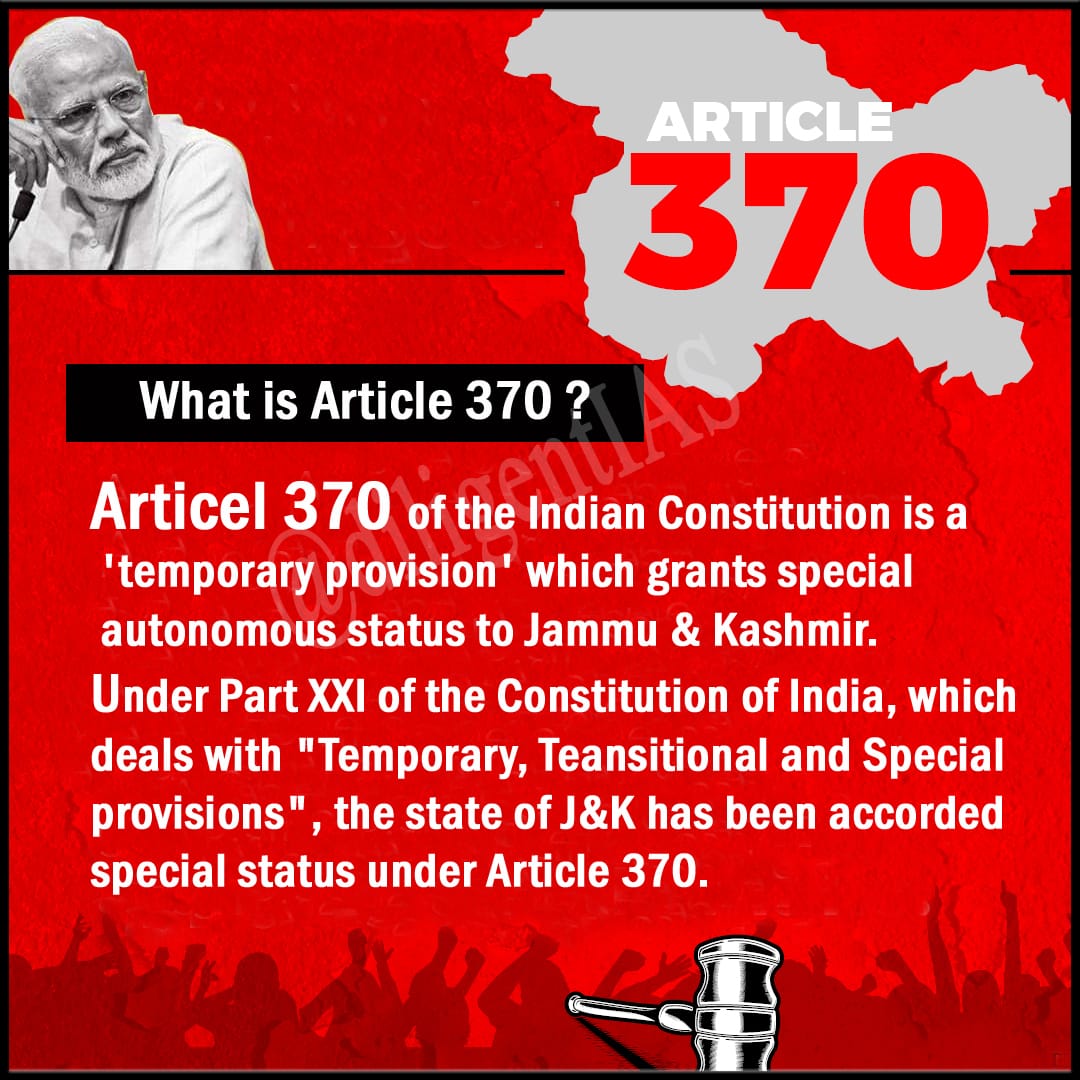
Kashmiris have been observed lamenting all Kashmiri lives lost to bullets after the repeal of Article 370. Regardless of the ethnicity of the murdered Kashmiri, a new unity has emerged based on the need for collective survival. The realisation that they would soon have only one identity—Kashmiri. Last week, thousands of people attended the burial of a special police officer and his brother, who extremists in Budgam slew.
The valley’s Pandits have yearned for dignity away from these perplexing negotiations. Sanjay Tickoo, president of the Kashmiri Pandit Sangharsh Samiti, stated in December 2019 that “he felt more threatened following the abrogation of Article 370 than he did in the 1990s.”
He resides in an ancient house in Srinagar’s Barbarshah neighbourhood. Despite the continuous threat calls, the elderly guy is losing hope. “The establishment is concerned about my safety.” The valley’s last Pandit voice will perish.” His chamber is covered in a thick covering of colourful carpets, typical of traditional Kashmiri houses. He is irritated by a slight wrinkle in the cloth.
“Kashmiris are used as a bearer cheque by everyone.” You may use us in whatever manner you want—in the name of Muslims, Pandits, or Dogras,” he says, his voice dropping at the end of the phrase. In addition, numerous Pandits who work for government agencies reside in migrant colonies that were established in the valley after then-Prime Minister Manmohan Singh announced an assistance package for the community.
Water shortages, poor drainage, and confined housing plague these ghetto-like environments. The Kashmiri Pandit colony at Vessu, Anantnag, has 695 families who earlier owned large mansions and orchards in Kashmir. Bharat Bhushan Bhat, a local, witnessed The Kashmir Files in Jammu. “The film is based on true events. But it’s not going to help us. He says, “We demand dignity.”
Back in Srinagar, “pro-India” lawyer Jahengeer Dar considered India more suited than Pakistan, only based on logic. He was a cricket fanatic, like many Kashmiris, and he skipped a meeting in Srinagar because he had a match in Anantnag scheduled. “You should have joined us,” he said with regret, adding, “I couldn’t handle the new ball.” He sympathised with the Pandits’ grief but said, “If their moon has blood clots, our moon is saturated in blood.”
These were his final words that morning, acknowledging his lived reality. Anika Nazir, a Srinagar medical student, had a different memory. In November, she travelled to Himachal Pradesh for a workshop on peacebuilding with Kashmiri youth, including Muslims, Pandit, and Ladakhi. “There was a time when we had to dress up and perform in our traditional garb. We, Kashmiris, wore pherans and sang our national anthem, and Ladakhis donned their traditional dress. “The Kashmiri Pandits pupils were able to put on the pheran, but they could not perform Kashmiri songs,” she explained. “They didn’t even know their tunes,” says the narrator.
Her mango shake’s ice cubes were melting and becoming liquid. The girl, who appeared to be much younger than her 22 years, wiped her eyes with tissue paper. “At long last, we were invited to share our personal histories. We were the children of second-generation parents. But it was astonishing to discover that we, Kashmiri Pandit children, shared our memories and that our stories were quite similar.”
She then became deafeningly quiet. There was nothing else I could say, and it was still possible to share your moon with someone else.
70,000 Pandit households evacuated Kashmir between December 31, 1989, and May 1990, leaving 800 Pandit families in Kashmir. Since then, 693 Pandits have been slain in Kashmir, with 7,000 Pandit families residing in various migrant camps in Jammu till March 30, 2022.
Kashmiri Pandits’ Dream of a “Homeland”
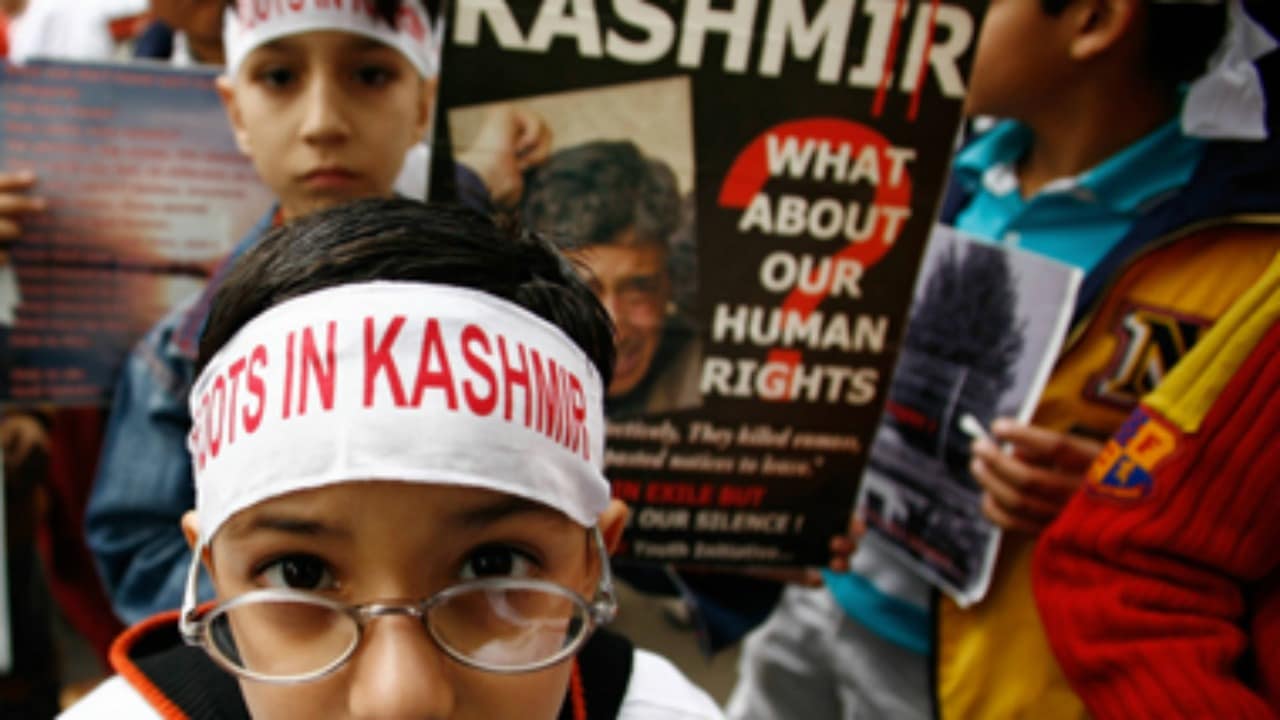
The Kashmir Files has reintroduced the issue of displaced Kashmiri Pandits. Will their problems—jobs, homes, monthly assistance, repatriation, and rehabilitation—receive national attention?
Kshama Kaul, a well-known Kashmiri Pandit (KP) novelist and poetess, waxes wistful as she recalls her lake-front house in Srinagar’s Rambagh. Unfortunately, following the exodus of Pandits from the Valley in the wake of the Pakistan-backed insurgency in early 1990, the labour of love had to be auctioned off for a pittance.
Even after 32 years, the décor of her Jammu house, where she lives with her husband and nonagenarian mother, reflects her family’s emotional connection to Kashmir. Surprisingly, the home sits next to the Kheer Bhawani temple, a copy of an old temple in Tulmul village, Ganderbal district, Kashmir.
Tegh Bahadur, the ninth Sikh guru; Kirpa Ram Dutt, a 17th century KP leader; Maharaja Ranjit Singh, the 18th century Sikh emperor; Birbal Dhar, a 19th-century taluqdar; Shriya Bhat, a 15th-century physician; and Abhinavagupta, the 10th century Hindu philosopher—all have paintings on the inside walls of their home. “Pandits were forced out of Kashmir six times before 1990,” she claims.
“You can’t separate Kala (art) from Kaal (time),” she says, emphasising that “…what happened in Kashmir in the early 1990s wasn’t an exodus.” It had been a genocide…”
Dardpur, Samay Ke Baad, Kashmir Unn Dinon, Murti Bhanjan, and Baadlon Mein Aag are among Kshama’s novels about the anguish of Kashmir’s dispossessed minority Hindu people.
Vivek Agnihotri had visited them while researching The Kashmir Files, a film that has brought the displaced people back into the spotlight. Indira Kaul, Kshama’s 96-year-old mother, has a grudge against the director-producer. “Ask him why he didn’t include the account of the Sonamarg couple who were dragged along the road by terrorists after being tied to a truck.”
Kshama’s son works in Canada, while her daughter, Bhasha Sumbli, is an actor and aspiring film director who played Shardha Pandit in The Kashmir Files.
Kshama did not file her grievance online. “We Have No Faith in Such Initiatives.” Pandits Cannot Return To Their Homes And Begin Living Among The Majority Community.”
Shardha’s persona, according to Kshama, was inspired by an actual occurrence in which a KP woman was gang-raped and then sliced in half with a mechanical saw while still alive.
Kshama recalls her home’s distress sale in Srinagar, saying, “We had spent our entire life’s money to create it.” We were forced to sell it to feed our family.
“At the time, my children were still newborns,” she tells Inventiva. “We got Rs 1 lakh for the house.” It would cost more than Rs 10 crore now.”
The Union Territory administration issued an order on August 13, 2021, under the Jammu and Kashmir Migrant Immovable Property (Preservation, Protection, and Restraint on Distress Sales) Act, 1997, mandating field verification by district magistrates within 15 days of a complaint as well as the submission of a compliance report.
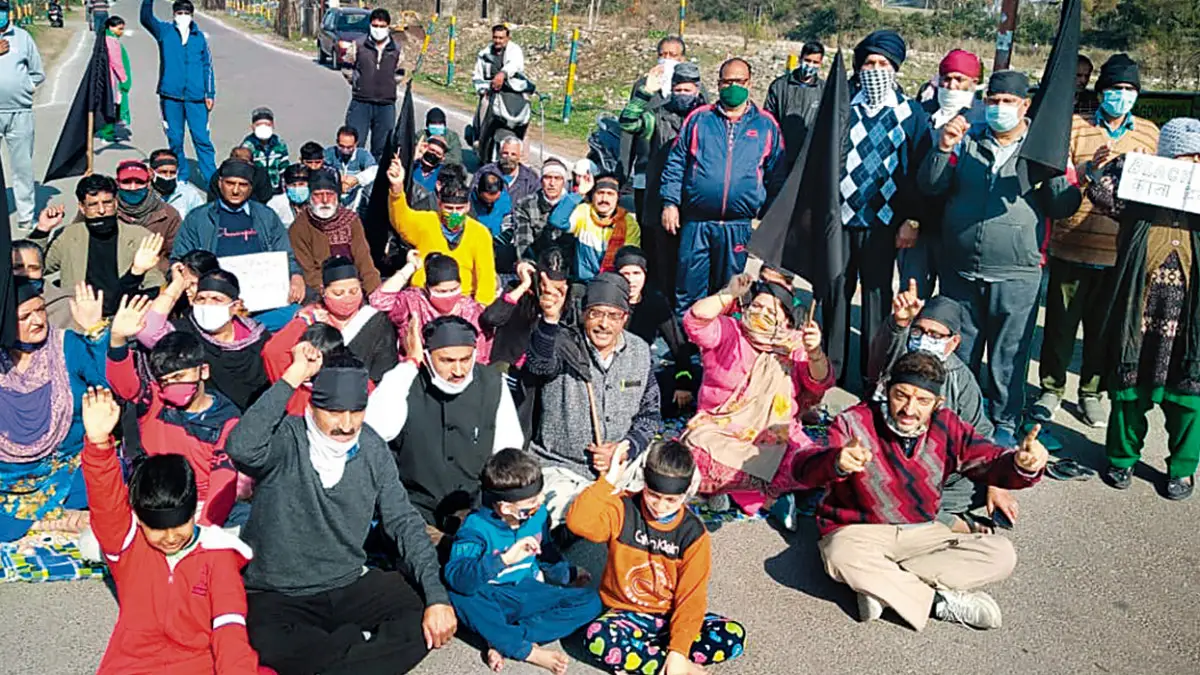
A month later, on September 7, the UT administration developed a website that allowed migrants to file complaints. “This effort will put an end to the agony of migrants who have been suffering since the 1990s,” stated Lt Governor Manoj Sinha at the website’s launch.
Kshama, on the other hand, did not file a complaint online. “We have no trust in government projects of this nature. Displaced Kashmiri Pandits “cannot return to their abandoned homes in Kashmir and begin living among members of the majority community,” she says, ruling out the possibility of rehabilitation unless the government meets Panun Kashmir’s long-standing demand for a separate “homeland” within Kashmir with UT status for the displaced community.
Agnishekhar, a well-known Hindi poet and playwright, accuses successive administrations and political parties in Kashmir of downplaying “genocide” and “jihad.” He recorded a Facebook video after the Kerala Congress launched a series of tweets outlining “Facts concerning Kashmiri Pandits’ concerns,” He described the tweets as “rubbing salt to our bleeding wounds.”
“Approximately 60,000 households, most of whom are Hindus, moved from the Valley during the instability,” according to the official website of the Relief and Rehabilitation Commission (Migrant) Jammu. Most of these households chose to stay in Jammu and the surrounding areas, while over 23,000 displaced families settled outside of J&K.”
While the government is constructing flats in Kashmir for displaced KP employees, other aspects of the return and rehabilitation policy have yet to be implemented.
Under the Prime Minister’s Reconstruction Programme, the Manmohan Singh-led UPA government began building townships for migrants in KP living in dilapidated camps around Jammu city in 2004. These townships included community halls, schools, hospitals, roads, drainage systems, and parks.
Flats consist of a room, a small lobby, a kitchen, and a washroom in these townships in Muthi, Purkhoo, Nagrota, Jagtai, and Butta Nagar. While the families that live in these flats have increased over time, those who are unemployed and unable to purchase new homes are finding it difficult to remain together.
Bansi Lal, for example, lives in Purkhoo township with some members of his family, but his two sons moved to the prefab structures at the 30-year-old camp—an unattractive slum—when they started raising their children. Despite the camp’s lack of essential utilities, it has over 100 registered families waiting for flats but cannot pay the monthly rent.
Due to financial difficulties, one of Bansi’s sons in the former migrant camp allegedly committed suicide last year. Upon Narendra Modi’s election (in 2014), he told us that we would be able to rebuild our lives in Kashmir, and we were optimistic. But he couldn’t even increase our monthly relief,” Bansi recalls, his face with helplessness and misery.
“The administration should seriously consider rehabilitating our situation in Kashmir.”
A week after The Kashmir Files was released, an ongoing protest in Jagati township, 20 kilometres outside Jammu city, reached 600 days of sit-in amid heated controversy about the flight of Pandits.
The demonstrators seek Rs 25,000 per family per month in financial relief, jobs for jobless youth, and eviction of encroachment from abandoned land and homes of displaced Pandits in Kashmir. They argue that before rehabilitating abandoned KP properties in the Valley—farms, orchards, residences, and shops—the government should start paying displaced KPs a monthly monetary compensation.
Even though most migrants in the township are unwilling to speak on the record for fear of retaliation in Kashmir, they urge that KPs be accorded minority status. Governments should also establish a Truth and Reconciliation Commission, similar to the one found in South Africa, to facilitate their dignified and safe return.
Lalita Pandita and her husband Shadi Lal enjoyed a solid annual income of nearly Rs 1 lakh from their orchards in Tangwari Pain, Baramulla district, when they fled Kashmir 30 years ago. “The government must pay us for our economic losses because we are unable to utilise our land and properties in Kashmir,” says Shadi Lal, who manages the Soan Kashmir Front, which advocates for displaced KPs’ rights. “In 1992, our double-story home with 22 windows burned down. The government compensated me with Rs 90,000 out of the assessed worth of the house of Rs 2 lakh. But our house was already worth over a crore rupees at the time.”

The home ministry notified the Rajya Sabha on March 17, 2021, about the components of the Prime Minister’s package’s strategy for repatriation and rehabilitation of Kashmiri migrants. Apart from providing jobs to displaced Pandits, it also offers monetary assistance of up to Rs 7.5 lakh to individuals who sold their homes between 1989 and the adoption of the J&K Migrant Immovable Property Preservation, Protection, and Restoration of Distress Sale Act of 1997.
The Prime Minister’s Rehabilitation Package, unveiled in 2008 by the United Progressive Alliance, awarded 5,797 government positions to displaced Pandits. While the government is building apartments in Kashmir for displaced KP employees, other aspects of the repatriation and rehabilitation strategy have yet to be implemented.
Officials of the Assistant Commissioner (Central) Kashmir, which deals with issues relating to displaced KPs, pretended ignorance about policy components other than employment when contacted by this reporter in early October last year, while emails to the office of the Divisional Commissioner of Kashmir went unanswered.
“Resettlement is a political matter, whereas employment is a question of economic survival,” Ashwani Kumar Chrungoo, a renowned displaced KP leader and state in charge of the BJP’s department of political feedback, told this reporter last month. These employees are likely to quit Kashmir and reside elsewhere after they retire.
The administration, in reality, lacks a coherent vision for our rehabilitation, and it couldn’t even relocate the militancy-affected internally displaced persons in Jammu province.”
“Of a total of 7,659 complaints we have received, 5,186 have been handled,” says Ashok Kumar Pandita, Relief and Rehabilitation Commissioner (Migrants) of the UT, in response to concerns of encroachment on the homes of displaced Pandits in Kashmir. The encroachment has been eradicated in as many as 2,500 cases. We’ve concluded 2,586 instances because the land has been reclaimed in some situations or the complaints have been dismissed on the merits in others.”
“The properties would get encroached again if Pandits don’t go back and take control,” Tej Tickoo, an executive member of the Delhi-based All India Kashmiri Samaj, warned this reporter when the government began removing encroachments from Pandit homes last year.
After the J&K high court issued an order in March 2020 on a petition brought by the All India Kashmiri Samaj, the UT administration started a series of actions to preserve abandoned properties of evacuated Pandits. The case was first filed in the Supreme Court in November 2006, requesting the government to ensure the safe return of the displaced Pandits.
In March 2016, the apex court moved it to the Jammu branch of the J&K high court. The community’s long-standing demand that the displaced KPs be labelled “internally displaced persons,” as directed by the UN High Commissioner for Human Rights, was also underlined in the petition.
Many residents of the Jagati migrant colony bemoan the wretched life they have been forced to spend in exile. “If you perform a survey, you will learn how many displaced Pandits in this area have major health problems.” The number of individuals suffering from mental health problems will astound you,” says Shadi Lal, chairperson of the Pradesh Congress Committee Migrant Cell, who accuses the governing party of exploiting displaced KPs for electoral advantage.
Hundreds of Muslim and Sikh families who moved with the Pandits supported his claims. “Apart from making noise, the BJP government has done nothing to address our most fundamental difficulties or assure our return and rehabilitation—a process that began under the previous UPA administration,” Shadi Lal said. Neither government nor private companies offer adequate housing for the bulk of PM package employees, who are forced to live in the houses of local Kashmiri Muslims.




